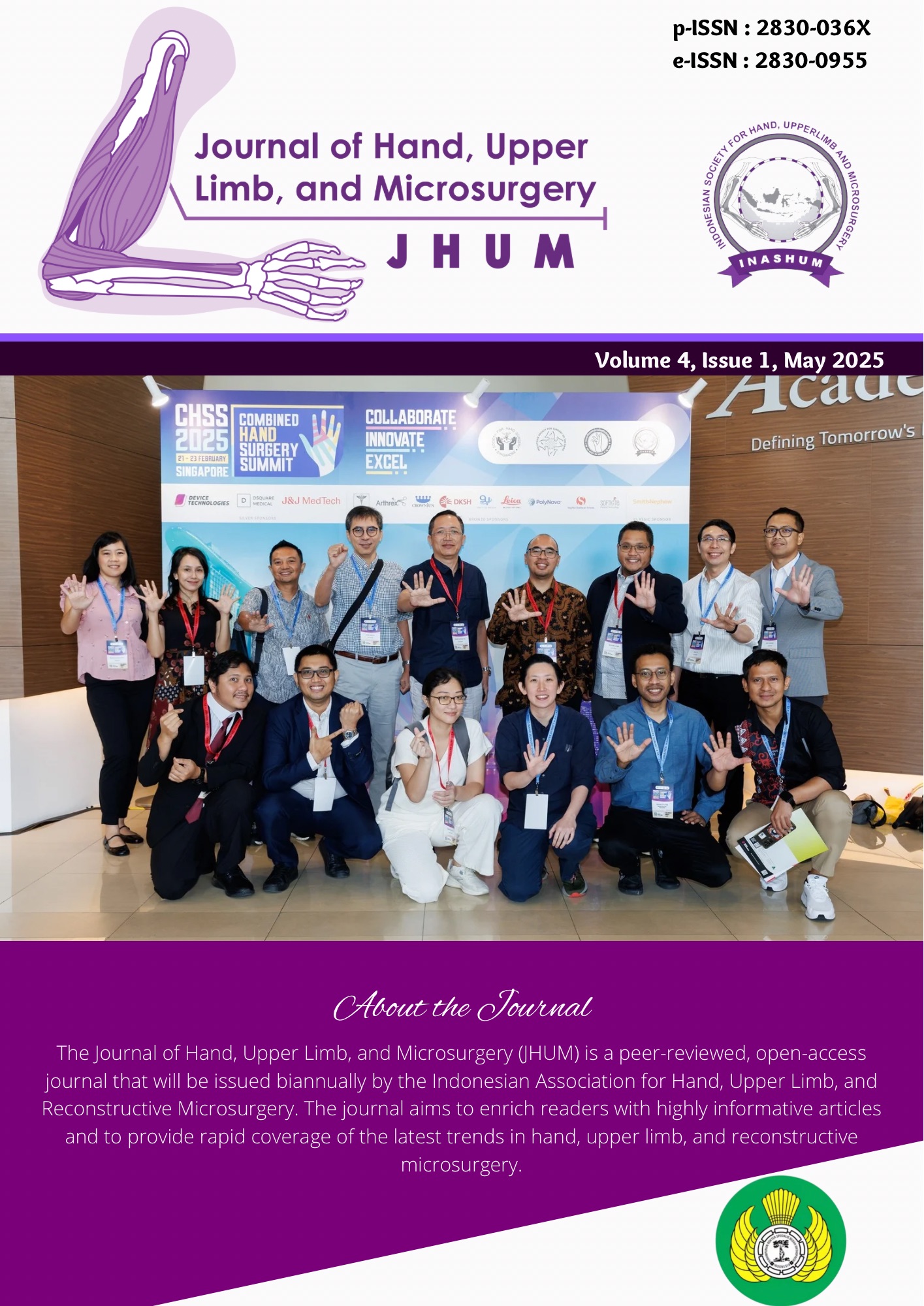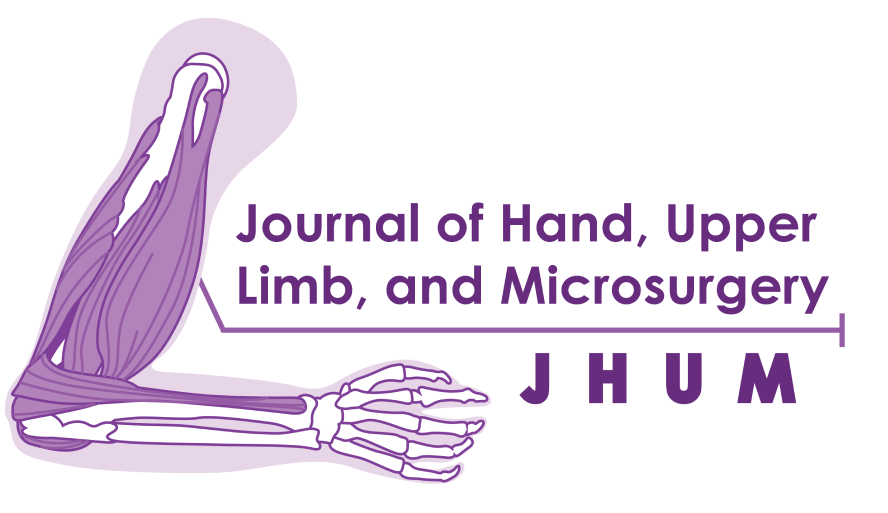FUNCTIONAL OUTCOME OF MEDIAN NERVE FASCICLE TRANSFER TO MUSCULOCUTANEOUS NERVE FASCICLE FOR RESTORATION OF ELBOW FLEXION IN BRACHIAL PLEXUS INJURY: A CASE REPORT
Abstract
Abstract
Introduction. Nerve transfer procedures are increasingly performed for repair of brachial plexus injury (BPI). The procedure essentially involves the coaption of a proximal foreign nerve to the distal denervated nerve to reinnervate the latter by the donated axons.
Objective: This retrospective observational study evaluated the outcome of the nerve transfer on bicipital power in patients with trunk C5 to T1 root level injuries operated on before 6 months of injury
Case presentation. A 20-year-old male with right incomplete traumatic brachial plexus injury post ganglionic type with discontinuity in root to divisions of C5-T1 already performed median nerve motor fascicle transferred onto the nerve to biceps. Initial elbow power strength was M0 assessed by the Medical Research Council (MRC) prior the surgery and elbow flexion revealing biceps contraction against gravity and resistance (M4 on MRC) after single fascicular nerve transfer surgery. We performed neurolysis to explore the presence of nerve and we found no contraction of phrenic nerve, disrupted integrity proximal part of trunk C5, partially lost of trunk C6 cover by fibrotic tissue, and intact of trunk C7. An internal neurolysis of the median nerve is performed to separate the individual fascicles. One fascicle from median nerve determined by combined motor action potentials (CMAP) to contain the greatest percentage of wrist flexor innervation is cut distally. Nylon 10-0 is used to anastomose the median fascicle to the biceps branch of the musculocutaneous nerve.
Discussion. In restoration of elbow flexion, we prefer to use median nerve transfer onto musculocutaneus nerve because preoperative clinical finding initial muscle strength of median nerve is better than ulnar nerve in MRC scale and its confirm intraoperatively with muscle stimulator device that reveal similar. After 6 months follow up the patient achieved elbow flexion strength MRC grade 4, prior the surgery elbow flexion strength MRC grade 0. Nat et al. found that for cases of functional deficit in elbow flexion, median nerve transfer to the musculocutaneous nerve has proven to be an effective treatment for the functional loss with combined C5–6 brachial plexus root avulsions. Sungpet et al. conclude that transfer of one fascicle of the median nerve to the motor branch of the biceps muscle appears to be reliable, without further impairment of the donor site at final follow-up examination
Conclusion. Median nerve fascicle transfer onto musculocutaneus nerve resulted in a significant improvement in elbow flexion strength and should be considered an effective, and in many cases preferable, alternative to ulnar nerve fascicle transfer.

